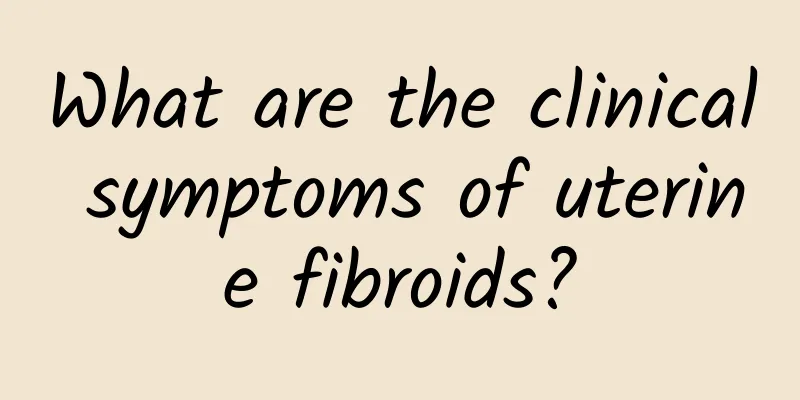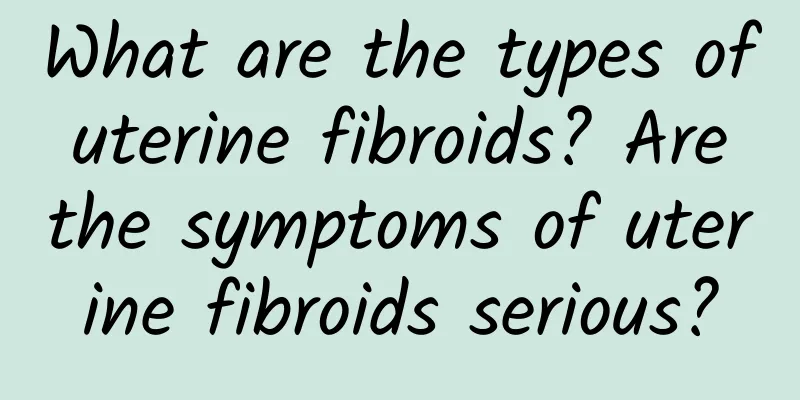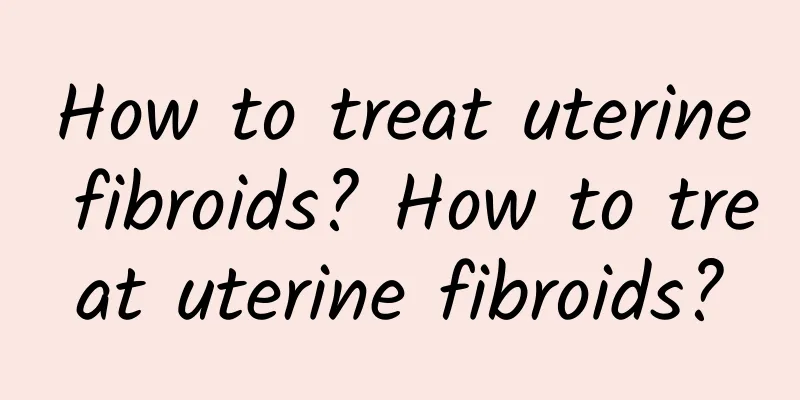What are the clinical symptoms of uterine fibroids?

|
The incidence of uterine fibroids is extremely high, which can easily cause infertility and other problems. Early detection and treatment of uterine fibroids can reduce the harm caused by uterine fibroids. So what are the clinical symptoms of uterine fibroids? Experts will introduce them. What are the clinical symptoms of uterine fibroids? Uterine fibroids usually have no obvious symptoms and are only occasionally discovered during pelvic examinations. The onset of uterine fibroid symptoms is closely related to the location, growth rate, and degeneration of the fibroids, but has little to do with the size or number of the fibroids. 1. Menstrual changes: This is the most common symptom. Large intramural fibroids increase the area of the uterine cavity and endometrium, resulting in poor uterine contractions or excessive endometrial hyperplasia, which can lead to shortened menstrual cycles, increased menstrual volume, prolonged menstrual periods, irregular vaginal bleeding, etc. Submucosal fibroids often cause menorrhagia, and as the fibroids grow larger, the menstrual period is prolonged. Subserosal fibroids and small intramural fibroids often have no obvious menstrual changes. 2. Increased leucorrhea: Intramural fibroids increase the area of the uterine cavity, increase the secretion of endometrial glands, and are accompanied by pelvic congestion, resulting in increased leucorrhea. Submucosal fibroids suspended in the vagina are susceptible to infection and necrosis on their surface, producing a large amount of purulent and bloody discharge and necrotic tissue discharge, accompanied by a foul odor. 3. Compression symptoms: Fibroids compress the bladder and cause frequent urination, urination disorders, urine retention, etc. 4. Abdominal mass: Patients often complain of abdominal distension and a mass felt in the middle of the lower abdomen. The mass is hard and irregular in shape. 5. Abdominal pain, backache, and lower abdominal distension: Patients usually have no abdominal pain, but acute abdominal pain occurs when the pedicle of the subserosal fibroid is twisted. When the fibroid turns red, the abdominal pain is severe and accompanied by fever. 6. Infertility: According to literature reports, it accounts for 25% to 40%. It may be that the fibroids compress the fallopian tubes and twist them, or deform the uterine cavity, hindering the implantation of the fertilized egg. |
<<: What's wrong with dull pain in the upper abdomen and frequent farting?
>>: What is the cause of moderate cervical erosion?
Recommend
Is a low-sugar, high-fat diet good or bad for losing weight?
In the famous movie "Golden Chicken", t...
What are the causes of uterine fibroids? What are the hazards of uterine fibroids?
Now, the number of uterine fibroids is on the ris...
What is vulvar itching and what to do
Vulvar itching is a skin symptom, which may be ca...
What is pelvic effusion?
Pelvic effusion is a common imaging finding, whic...
Can I still get pregnant after uterine fibroid surgery? Is uterine fibroid a malignant tumor?
Uterine fibroids are a very common uterine diseas...
Just 15 minutes a day! 5 ways to get rid of belly fat
Is it so difficult to be thin? The biggest enemy ...
What are the main treatment methods for adnexitis?
Female adnexitis is a very common gynecological d...
Experts tell you the cause of atrophic vulvar leukoplakia!
Vulvar leukoplakia, also known as vulvar dystroph...
Beware of the dangers of ovarian cysts
Ovarian cysts are common gynecological diseases. ...
What are the best treatments for cervical hypertrophy?
For patients, if they have symptoms of cervical h...
If you have cervicitis, you will have HPV
Cervicitis and HPV (human papillomavirus) infecti...
Experts introduce the main methods of preventing and treating chronic cervicitis
Clinically, the cause of chronic cervicitis is no...
What is the cost of left ovarian cyst?
Left ovarian cyst refers to a cystic mass in the ...
Vaginal itching and abnormal fishy discharge
Vaginal itching accompanied by abnormal fishy sme...
Patients must understand the specific symptoms of dysmenorrhea
The specific symptoms of dysmenorrhea shown by pa...









